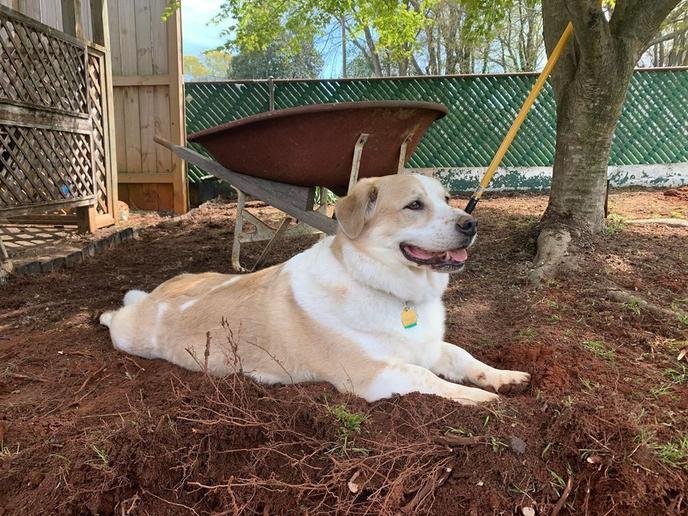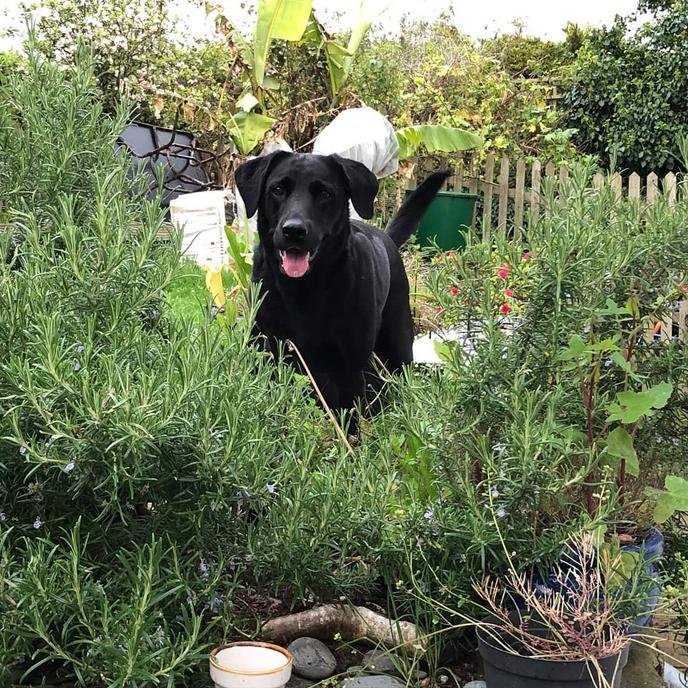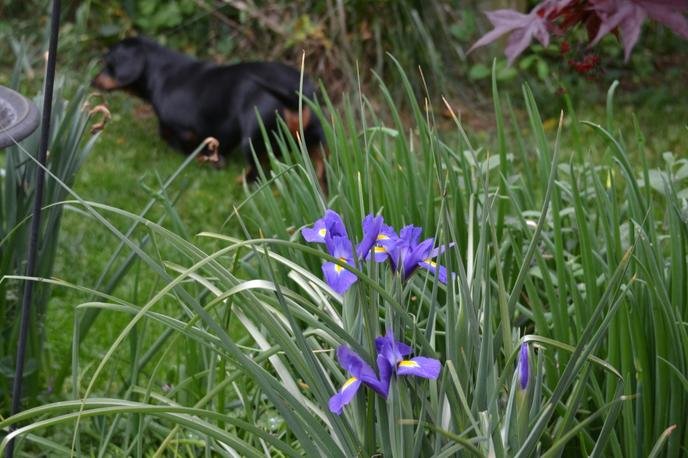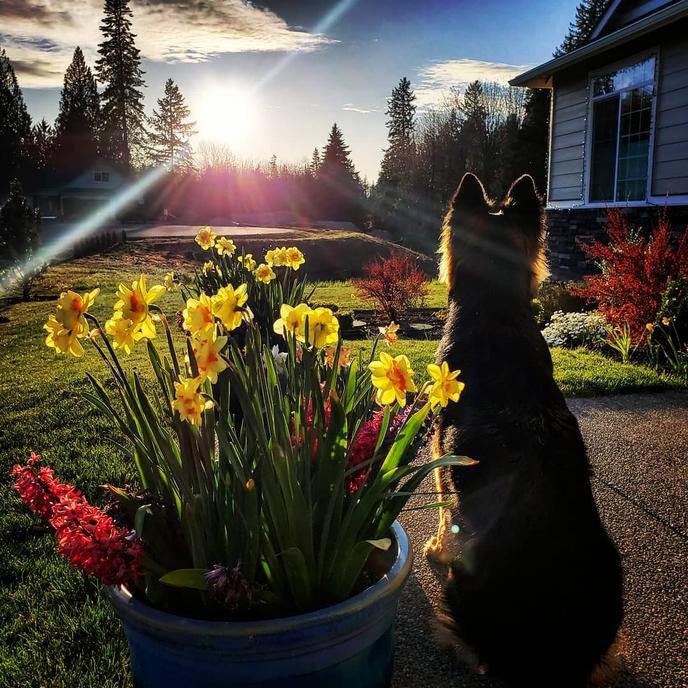When you’re planning your garden, whether it’s to create a peaceful retreat or to grow fresh vegetables, it’s essential to keep your furry friends in mind. Dogs are naturally curious, and their playful nature can lead them to nibble on plants in the yard, which could have dangerous consequences. While some plants are beneficial and safe for dogs, others can be harmful—even deadly. To help you make the best choices for both your garden and your dog, here’s a guide to the best and worst plants for your canine companion.
Dog-Friendly Plants: Nature’s Little Helpers
Not all plants are created equal, and some offer more than just beauty—they also provide health benefits for your dog. Here are a few plants that not only look great in your garden but can also help improve your dog’s well-being when used appropriately.

1. Chamomile
Chamomile is a soothing herb, famous for its calming properties. You can grow it easily from seed, and once it blooms, the flowers can be dried and used to prepare a gentle tea. This tea, when cooled, can be used to bathe your dog’s itchy skin or even applied as a compress for irritated eyes. Chamomile can also help ease digestive issues or reduce anxiety when added to your dog’s food. It’s a great natural remedy for a calm and happy dog!
2. Fennel
This Mediterranean herb isn’t just a kitchen staple for humans; it’s also a wonderful addition to your dog’s diet. Rich in vitamins A and C, fennel can support your dog’s immune system, improve digestion, and even freshen their breath. You can plant fennel in your garden and harvest its bulbs in about three months. Additionally, fennel seeds have natural flea-repelling properties, making them a great option for keeping pests at bay.

3. Dandelion
Dandelions often get a bad rap as weeds, but they are packed with nutrients and health benefits for dogs. The leaves are rich in vitamins A and C and can help with kidney stones and digestive issues. Simply dry the leaves and sprinkle them into your dog’s food. Dandelions are also a mild diuretic, which can help with water retention or other related issues. So, the next time you see your dog sniffing around these sunny yellow flowers, rest assured that it’s a beneficial addition to their diet.
4. Rosemary
This fragrant herb is more than just a culinary delight; it’s also a powerhouse for your dog’s health. Rosemary promotes good digestion, boosts the immune system, and even acts as a natural bug repellent. Plus, it’s easy to grow and can thrive in your garden, where it will naturally deter pests from bugging both you and your dog. Just be cautious when planting—make sure the seeds are well-spaced for proper growth.

Plants to Avoid: Dangerous Flora for Dogs
While some plants are beneficial, many others can be toxic to dogs. These plants, when ingested, can lead to a range of health issues, from mild stomach upset to life-threatening conditions. Here’s a list of common plants you should keep away from your dog’s reach.
1. Perennials
Several perennial plants, while beautiful, are hazardous to dogs. For instance:

- Chrysanthemums: Though these flowers add vibrant colors to gardens, they can cause nausea, loss of coordination, and even vomiting if eaten by your dog.
- Dahlias: Another common perennial, dahlias can lead to gastrointestinal distress and dermatitis when consumed by dogs.
- Iris: While irises are lovely, they can cause vomiting, lethargy, and diarrhea in dogs if ingested.
- Lily of the Valley: This small but potent plant can cause vomiting, heart arrhythmias, seizures, and even death if consumed by your dog.
- Peony: These bright blooms are best kept out of your dog’s reach, as eating them can lead to an upset stomach.
2. Annuals
Many annuals are toxic to dogs, especially those with bright, tempting colors. Some to avoid include:
- Begonias: Although visually striking, the tubers of begonias can irritate your dog’s mouth and digestive system.
- Geraniums: While the plant’s appearance might be appealing, certain varieties, like Pelargonium, can cause skin rashes and low blood pressure in dogs.
3. Bulbs
Bulbs are often a favorite in spring gardens, but they can be highly dangerous for dogs:
- Amaryllis: Beautiful and dramatic, amaryllis bulbs can cause severe stomach issues, including abdominal pain, vomiting, and diarrhea, if ingested by your dog.
- Daffodils: These cheerful flowers are toxic to dogs and can lead to nausea, digestive upset, and even heart problems if consumed.
- Hyacinth: While these flowers are sweet-smelling and beautiful, they can cause mouth irritation and, in more severe cases, seizures if eaten by your dog.
- Tulips: Tulip bulbs are especially dangerous and can lead to gastrointestinal issues and other symptoms if ingested.
4. Shrubs
Several shrubs that are commonly found in gardens can pose serious risks to dogs:

- Aloe Vera: While aloe vera is known for its healing properties for humans, it can cause severe stomach upset and other symptoms in dogs if ingested.
- Azaleas: These brightly colored shrubs can cause vomiting, diarrhea, and even more severe reactions if consumed by your dog.
- Lantanas: Though they look lovely, lantanas are toxic to dogs, potentially leading to vomiting, diarrhea, and lethargy if eaten.
5. Vines
Certain climbing plants are not safe for dogs, especially those with a strong tendency to nibble on foliage:

- English Ivy, Clematis, Morning Glory, and Wisteria: All of these vines can cause symptoms ranging from stomach upset to seizures if ingested by dogs. They are best kept out of reach in any pet-friendly garden.
Creating a Safe Garden for Your Dog
Designing a pet-friendly garden requires careful consideration of both aesthetics and safety. Incorporating beneficial plants like chamomile, fennel, and dandelions can enhance your garden while promoting the health of your dog. On the other hand, avoiding toxic plants such as lilies, daffodils, and azaleas will help protect your furry companion from potential harm.
As you plan your garden, take the time to research the plants you want to include and always be mindful of their impact on your dog’s health. With a little care, you can create a beautiful and safe outdoor space where both you and your dog can enjoy nature together.


